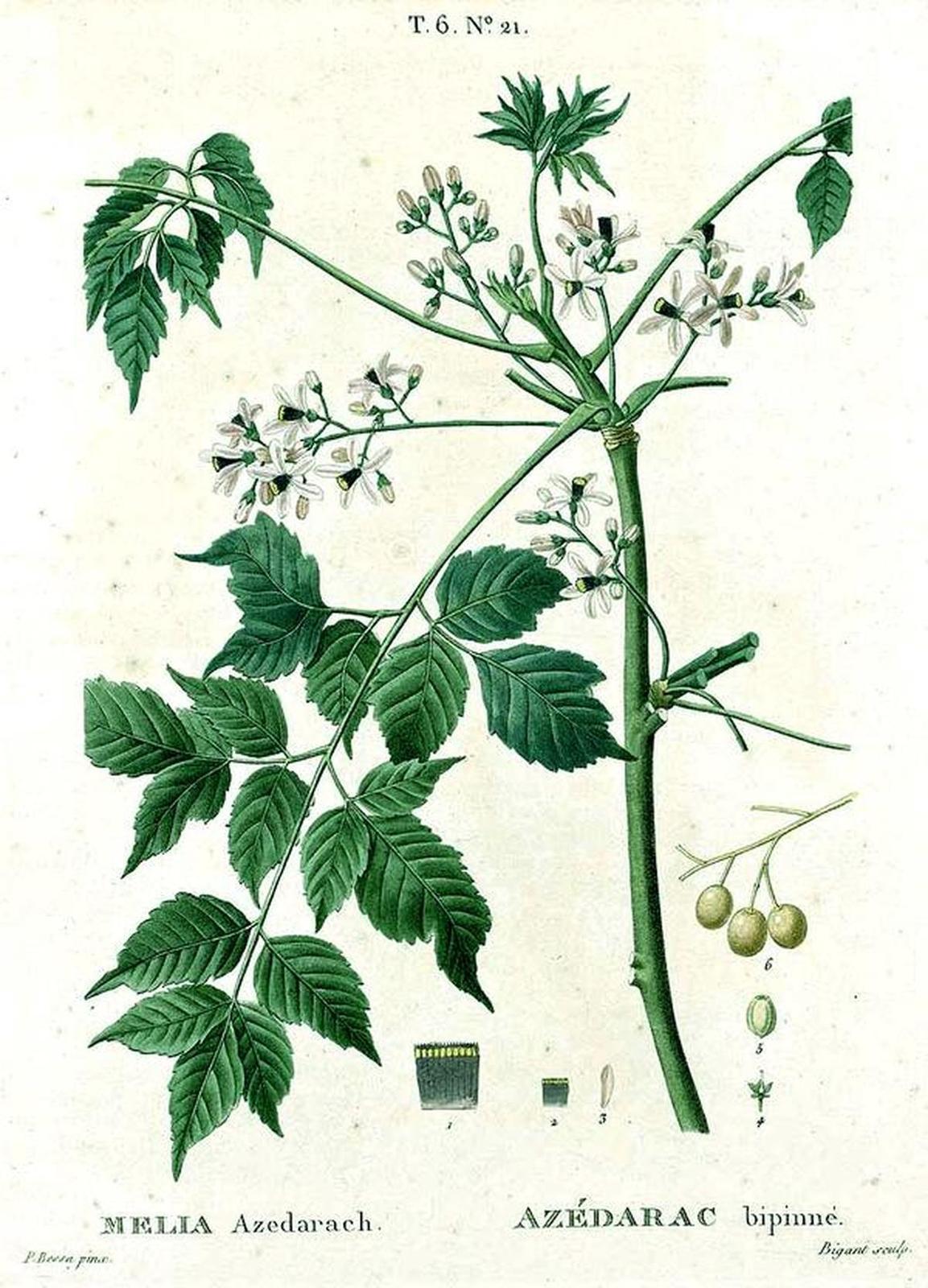Melia azedarach L.
MeliaceaeMelia es el nombre griego del fresno, cuya madera empleaban los antiguos griegos en la elaboración de lanzas. Se tomó el término para denominar a estos árboles originarios del Himalaya por el parecido de sus hojas con las del fresno. Considerado como árbol sagrado en las zonas de las que procede, la melia fue introducida en España durante el siglo XVI. Sin embargo, puede que este árbol fuera ya conocido en la Edad Media; así, el agrónomo andalusí Ibn al Awwam recomienda la plantación de árboles como el azaderache junto a pozos y depósitos de agua. Unos 300 años más tarde, otro agrónomo y tratadista, Gregorio de los Ríos, ahora del Renacimiento, recomienda plantarlo en los jardines por dar flores hermosas. La obra de este clérigo, conocida como Agricultura de jardines y publicada en 1592 bajo el influjo de Felipe II, es el primer tratado en castellano de flora ornamental y posiblemente también el primero en toda Europa sobre el diseño de jardines. Por la época en que Gregorio de los Ríos da sus consejos de jardinería, se llevan a cabo en los jardines del Real Alcázar intervenciones encaminadas a incorporar este espacio a los gustos clásicos propios del Renacimiento. La primera actuación en este sentido, hacia 1575, consistió sin embargo en cortar dos grandes árboles del paraíso que se alzaban en el Jardín de Crucero, habiéndose de realizar andamios para facilitar la tala y poder sacar la madera. Se perdieron así unos ejemplares de melia que tuvieron su origen posiblemente en la Edad Media.
Procedencia
Oriental/AsiáticoCalendario
Hábitat
Morfología
 Árbol
Árbol
 Extendida
Extendida
 Pinnada
Pinnada
 Ovada
Ovada
 Opuesta
Opuesta
 Serrado
Serrado
 Cuneada
Cuneada
 Acuminado
Acuminado
 Caduco
Caduco
